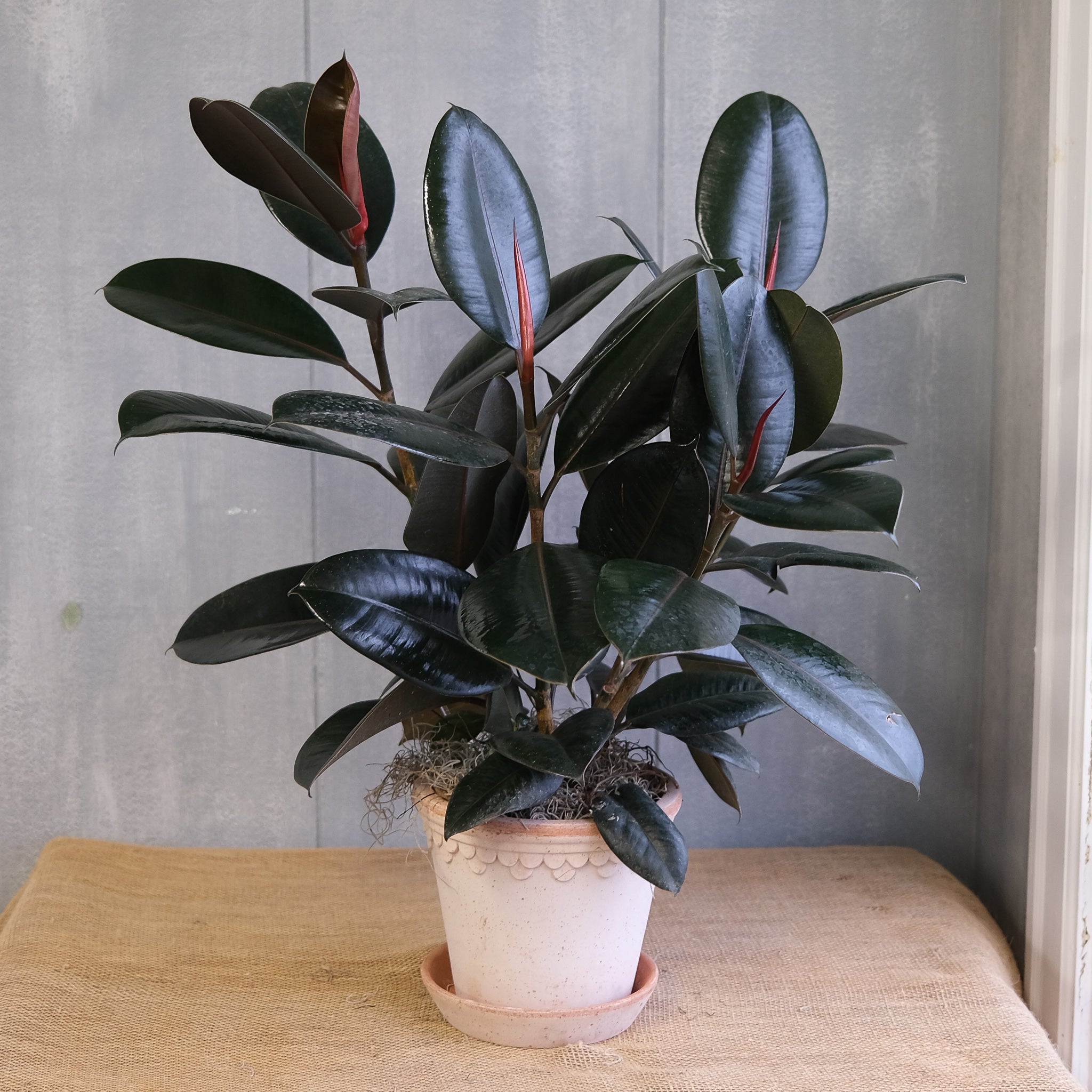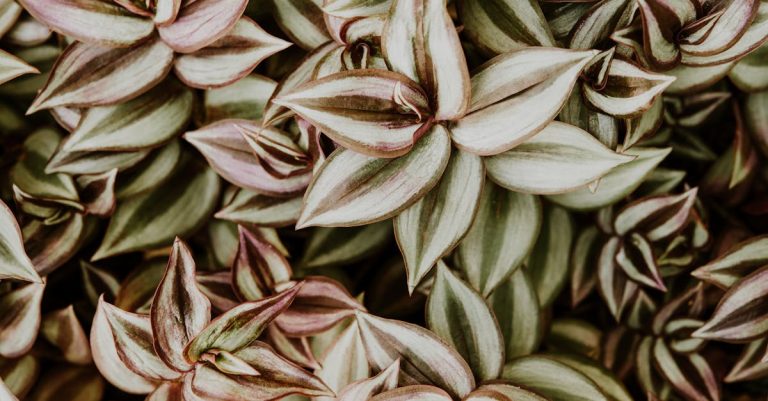How To Care For Rubber Plant (Ficus elastica)
Rubber plants, also known as Ficus elastica, are popular houseplants known for their large, glossy leaves and easy care requirements. These plants have a rich history dating back to their native origins in Southeast Asia, where they were traditionally used to produce rubber. Today, rubber plants are prized for their ability to purify the air and add a touch of greenery to indoor spaces.
One common issue that many plant owners face when caring for rubber plants is overwatering. In fact, overwatering is one of the leading causes of rubber plant problems, as it can lead to root rot and other serious issues. To avoid overwatering, it is important to allow the top few inches of soil to dry out between waterings. Additionally, make sure to use a well-draining potting mix and avoid letting water accumulate in the saucer beneath the plant.
Another important factor to consider when caring for rubber plants is proper lighting. Rubber plants thrive in bright, indirect light, so be sure to place them near a sunny window where they can receive plenty of natural light. If your plant starts to show signs of yellowing or drooping leaves, it may be an indication that it is not getting enough light. Consider moving it to a brighter location to help it thrive.
In addition to proper watering and lighting, rubber plants also benefit from regular fertilization during the growing season. Using a balanced liquid fertilizer once a month can help promote healthy growth and vibrant foliage. However, be sure not to over-fertilize, as this can lead to nutrient imbalances and other issues. With proper care and attention to detail, your rubber plant can thrive and bring beauty to your home for years to come.

How Can I Properly Care for Rubber Plant (Ficus elastica)?
When it comes to caring for your Rubber Plant (Ficus elastica), it is important to provide the proper conditions for optimal growth. This includes adequate sunlight, watering, and ensuring the plant is in a well-draining potting mix. In the next section, we will discuss in detail the specific care instructions you need to follow to keep your Rubber Plant healthy and thriving.

Light
Rubber plants thrive in bright, indirect light. Place your plant near a window where it can receive plenty of sunlight, but be sure to avoid direct sunlight as it can scorch the leaves.
Water
Water your Rubber Plant when the top inch of soil feels dry. Make sure not to overwater as this can lead to root rot. During the growing season, usually in spring and summer, water more frequently but reduce watering in the winter months.
Temperature and Humidity
Rubber plants prefer warm and humid conditions. Keep your plant in a room where the temperature stays between 60-80°F (15-27°C). Mist the leaves regularly or place a humidifier nearby to maintain proper humidity levels.
Soil
Use a well-draining potting mix for your Rubber Plant, such as a mixture of peat, perlite, and sand. Repot your plant every 2-3 years to refresh the soil and provide more space for growth.
Fertilizer
Feed your Rubber Plant with a balanced liquid fertilizer once a month during the growing season. Be sure to dilute the fertilizer to half strength to prevent burn on the leaves.
Pruning
Trim any leggy or yellowing leaves to encourage new growth and maintain the plant’s shape. You can also prune back any overgrown stems to keep your Rubber Plant looking full and healthy.
Pests
Keep an eye out for common houseplant pests such as mealybugs, spider mites, and scale insects. If you notice any signs of infestation, treat your Rubber Plant with Neem oil or insecticidal soap to get rid of the pests.
Propagation
You can propagate your Rubber Plant through stem cuttings. Simply take a cutting with at least one leaf node, plant it in moist soil, and place it in a warm, bright location. Roots should start to form within a few weeks.
Fun Fact
Rubber Plants (Ficus elastica) are named for their sticky sap, which was once used to make rubber. In fact, the first rubber plants were cultivated for their latex sap, not their ornamental value.
How much light does a rubber plant need?
A rubber plant thrives in bright, indirect light. Avoid direct sunlight as it can scorch the leaves.
How often should I water my rubber plant?
Water your rubber plant when the top inch of soil feels dry to the touch. Typically, this is about once a week in the summer and every 2-3 weeks in the winter.
What type of soil is best for a rubber plant?
Use a well-draining potting mix with perlite or sand added to help prevent waterlogged soil.
Can I propagate my rubber plant?
Yes, rubber plants can be propagated through stem cuttings. Simply cut a 4-6 inch section of stem with at least one leaf, let it callous for a few hours, then place it in water or soil to root.
How can I prevent pests on my rubber plant?
Regularly inspect your plant for pests such as spider mites or mealybugs. If you notice any, wipe the leaves with a damp cloth or use insecticidal soap to get rid of them.
Should I fertilize my rubber plant?
During the growing season in spring and summer, you can fertilize your rubber plant with a balanced houseplant fertilizer every 4-6 weeks. Avoid fertilizing in the winter when the plant is dormant.
Why are the leaves of my rubber plant turning yellow?
Yellow leaves on a rubber plant can be a sign of overwatering, underwatering, or lack of nutrients. Check the soil moisture and adjust your watering schedule accordingly.
How can I encourage my rubber plant to grow taller?
To promote vertical growth, rotate your rubber plant frequently to ensure even light exposure on all sides. You can also prune any leggy or overgrown branches to encourage new growth.
Can I place my rubber plant outside?
Rubber plants can be placed outside in a shaded or partially shaded area during the summer months. Just be sure to bring it back inside before the temperatures drop below 50°F.
Is a rubber plant toxic to pets?
Yes, rubber plants are toxic to pets if ingested. Keep your rubber plant out of reach of pets or opt for pet-friendly houseplants instead.
In conclusion, caring for a Rubber Plant (Ficus elastica) requires attention to several key factors. Providing the plant with the right amount of light, water, and humidity is essential for its growth and health. Placing the plant in a bright, indirect light location, watering it when the top inch of soil is dry, and misting the leaves regularly can help maintain the optimal conditions for the Rubber Plant. Additionally, fertilizing the plant every 4-6 weeks during the growing season and periodically cleaning its leaves to remove dust can promote vigorous growth and prevent pest infestations.
Overall, the Rubber Plant is a versatile and resilient houseplant that can thrive in a variety of indoor environments. By following the care tips outlined in this article, plant lovers can enjoy the beauty of a healthy Rubber Plant in their home or office space. With proper care and attention, this sturdy plant can become a long-lasting and beautiful addition to any indoor garden.


:max_bytes(150000):strip_icc():format(webp)/grow-fiddle-leaf-fig-indoors-1902756-hero-feca31e64e91430794e2bdcc9fa1e901.jpg)



